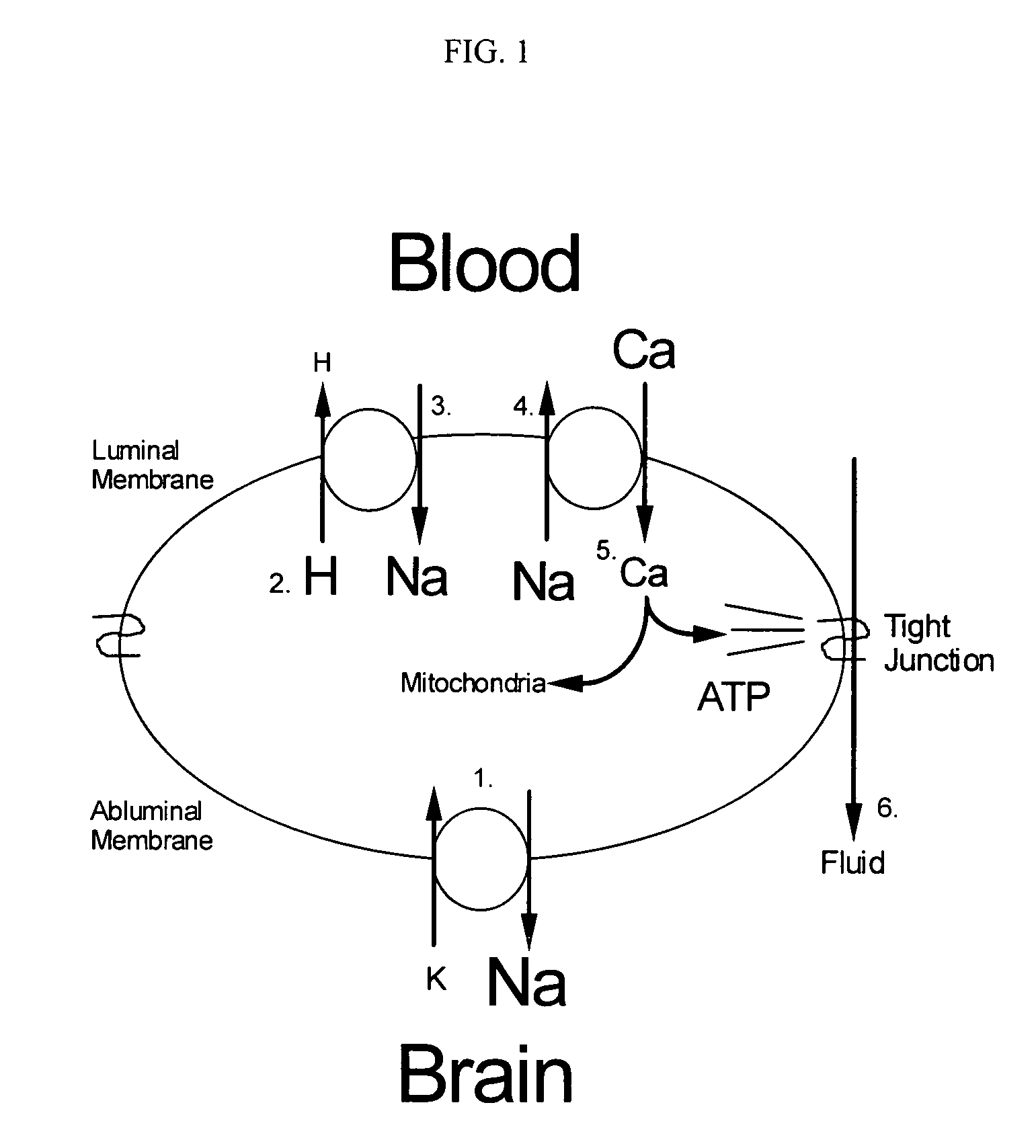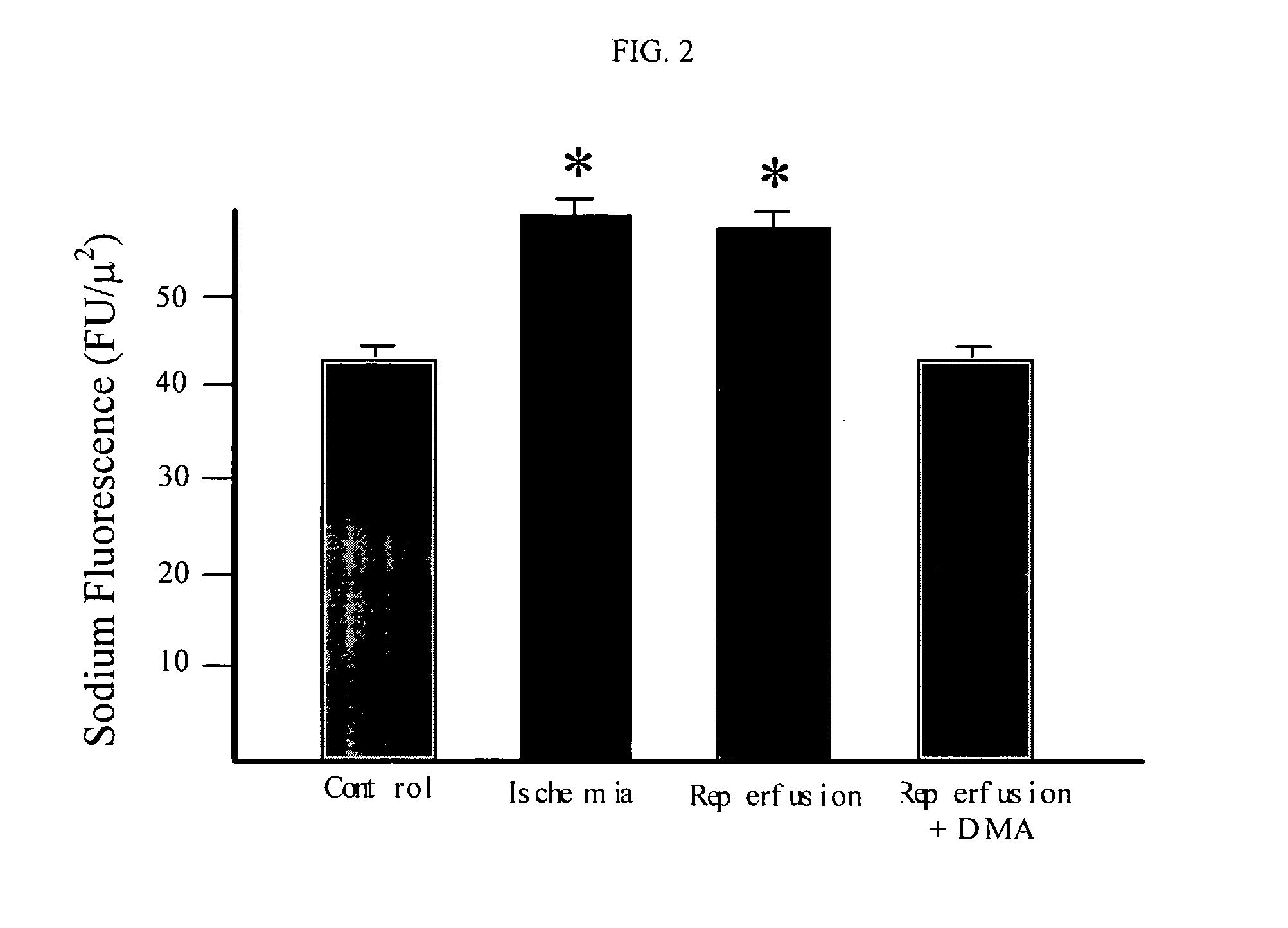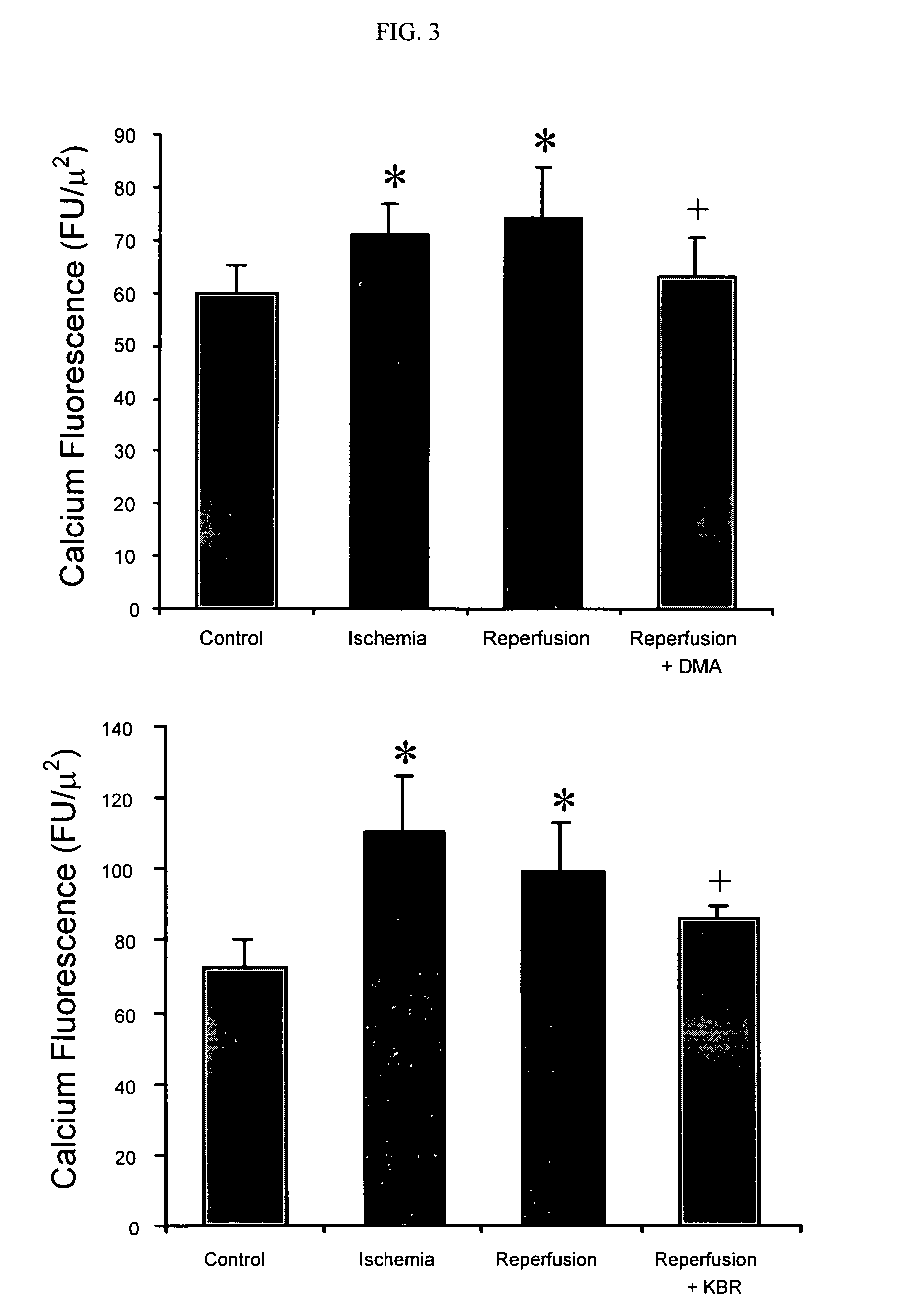Cytoprotective thereapeutic agents for the prevention of reperfusion injury following ischemic stroke
a technology of cytoprotective thereapeutic agents and ischemic stroke, which is applied in the direction of anti-noxious agents, peptide/protein ingredients, and metabolic disorders, etc., can solve the problem that 95% of stroke victims are not treated in time, and achieve the effects of reducing reactive oxygen species, and preventing blood-brain barrier reperfusion injury
- Summary
- Abstract
- Description
- Claims
- Application Information
AI Technical Summary
Benefits of technology
Problems solved by technology
Method used
Image
Examples
example 1
Culturing Blood-brain Barrier Cells
[0037] Cultured blood-brain barrier cells can be used as an in vitro cellular model to confirm that Na / Ca exchange may operate in the reverse direction under conditions simulating reperfusion, following transient ischemia. Cerebral capillary endothelial cells are isolated from bovine brain by the method of Meresse et al. (Meresse S, Dehouck M-P, Delmore P, Bensaid M, Tauber J-P, Delbart C, Fruchart J-C, and Cecchelli R. Bovine brain endothelial cells express tight junctions and monoamine oxidase activity in long-term culture. J Neurochem 53: 1363-1371, 1989), or purchased from Cell Systems Corporation (Kirkland, Wash). Cells are grown and maintained (up to passage 5) on collagen type I- and fibronectin-coated tissue culture flasks in Eagle's minimal essential medium supplemented with 10% fetal bovine serum (Rubin L L, Hall D E, Porter S, Barbu K, Cannon C, Horner H C, Janatpour M, Liaw C W, Manning K, Morales J, Tanner L I, Tomaselli K J, and Bard...
example 2
Ischemia-reperfusion Protocol Using Cultured Cells
[0038] Cultured blood-brain barrier cells can be exposed to conditions simulating ischemia and reperfusion, by a method similar to that reported in the literature (Ikeda K, Nagashima T, Wu S, Yamaguchi M, and Tamaki N. The role of calcium ion in anoxia / reoxygenation damage of cultured brain capillary endothelial cells. Acta Neuochir Suppl (Wien) 70: 4-7, 1997). The precise composition of the incubation medium varies, depending upon the experimental protocols. In general, however, cells are incubated at 37° C. first in an ischemic medium (without glucose, pH 6.8) equilibrated with an atmosphere of 95% N2 and 5% CO2, followed by simulated reperfusion in a control medium (5.6 mM glucose, pH 7.4) equilibrated with room air and 5% CO2. Typical incubation media are as follows: (control) 114 mM NaCl, 81 mM Na2HPO4, 0.5 mM MgCl2, 0.9 mM CaCl2, 5.6 mM glucose, and 24 mM NaHCO3, pH 7.4; (ischemic) 133.4 mM NaCl, 4.1 mM Na2HPO4, 4.1 mM KH2PO4,...
example 4
Evidence that Elevated Intracellular Sodium and Reverse Activation of Na / Ca Exchange Contribute to a Rise in Intracellular Calcium During Reperfusion Following Ischemia
[0048] Calcium fluorescence (FIG. 3) was measured in cultured bovine blood-brain barrier endothelial cells under conditions similar to those used for FIG. 2: 1) control, 2) simulated ischemia, 3) simulated ischemia followed by simulated reperfusion, 4) simulated ischemia / reperfusion, in the presence of an inhibitor (dimethylamiloride, 100 μM) of Na / H exchange (upper panel), or an inhibitor (KB-R 7943, 20 μM) of the reverse movement of Na / Ca exchange (lower panel). Intracellular calcium was quantified in cultured blood-brain barrier cells by using a fluorescent probe and confocal laser microscopy (Ikeda K, Nagashima T, Wu S, Yamaguchi M, and Tamaki N. The role of calcium ion in anoxia / reoxygenation damage of cultured brain capillary endothelial cells. Acta Neuochir Suppl (Wien) 70: 4-7, 1997). Measurements were made u...
PUM
| Property | Measurement | Unit |
|---|---|---|
| pH | aaaaa | aaaaa |
| pH | aaaaa | aaaaa |
| pH | aaaaa | aaaaa |
Abstract
Description
Claims
Application Information
 Login to View More
Login to View More - R&D
- Intellectual Property
- Life Sciences
- Materials
- Tech Scout
- Unparalleled Data Quality
- Higher Quality Content
- 60% Fewer Hallucinations
Browse by: Latest US Patents, China's latest patents, Technical Efficacy Thesaurus, Application Domain, Technology Topic, Popular Technical Reports.
© 2025 PatSnap. All rights reserved.Legal|Privacy policy|Modern Slavery Act Transparency Statement|Sitemap|About US| Contact US: help@patsnap.com



